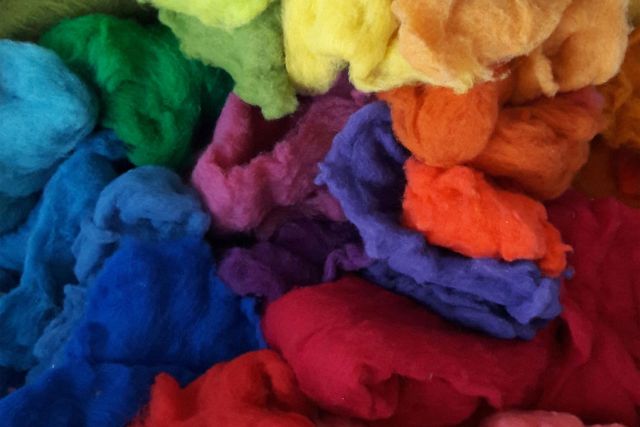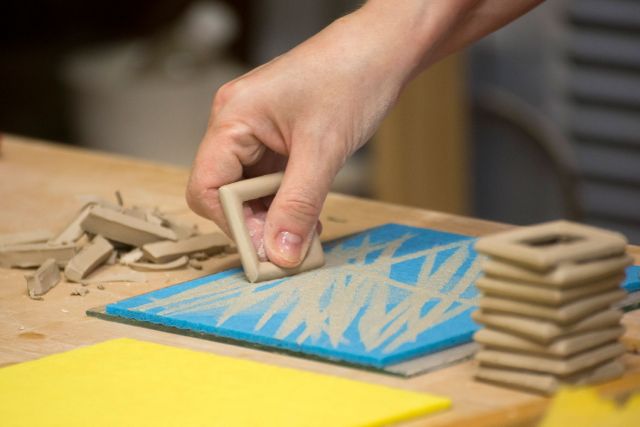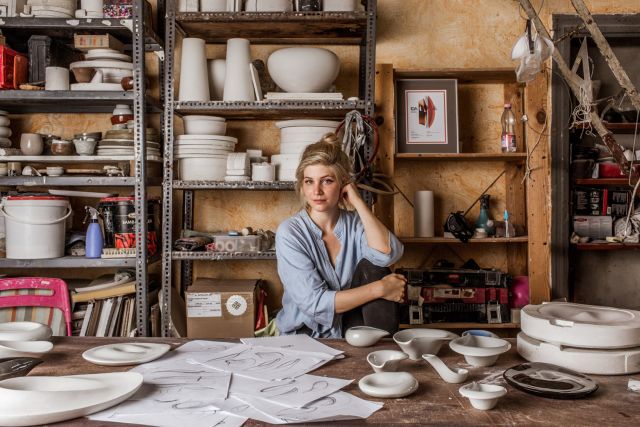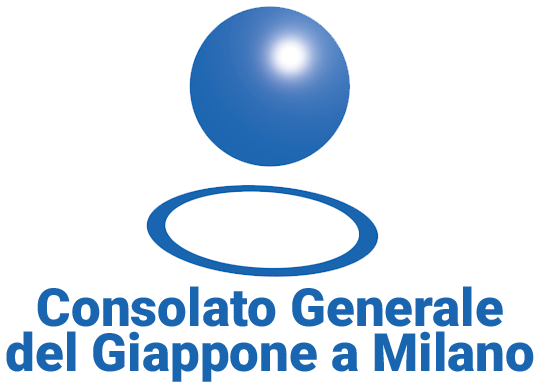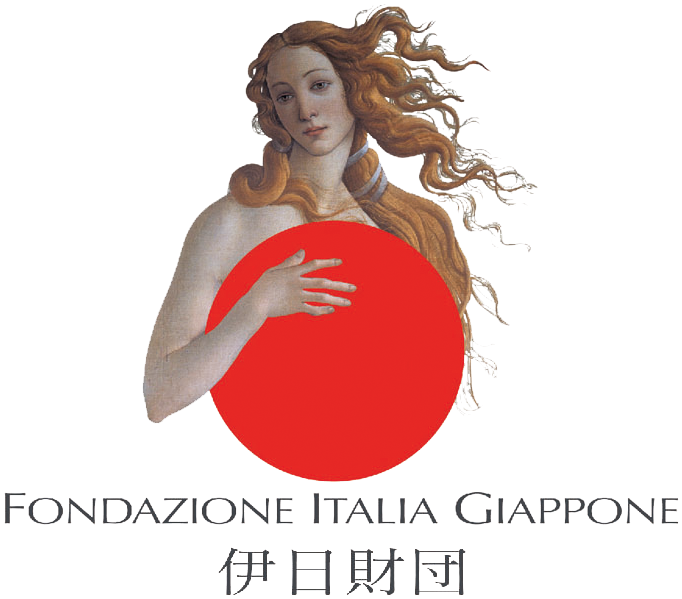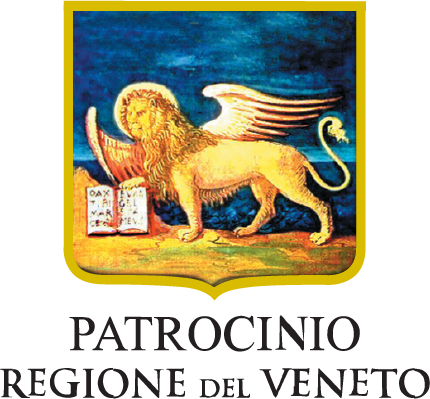This illustration, created for a children's guide to the Hungarian city of Debrecen, depicts an audience full of children watching a puppet show. It is made in the traditional tempera technique with the addition of oily pastels.
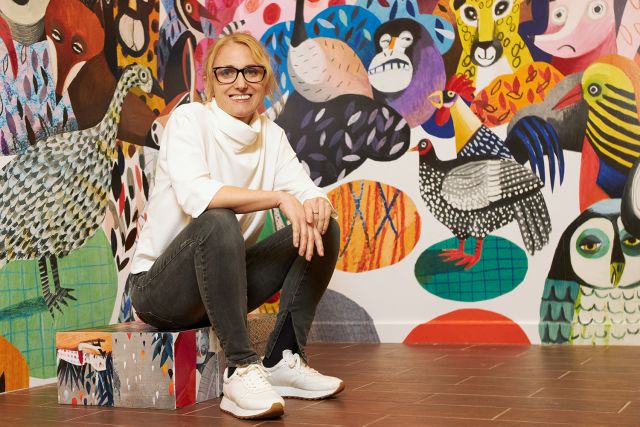
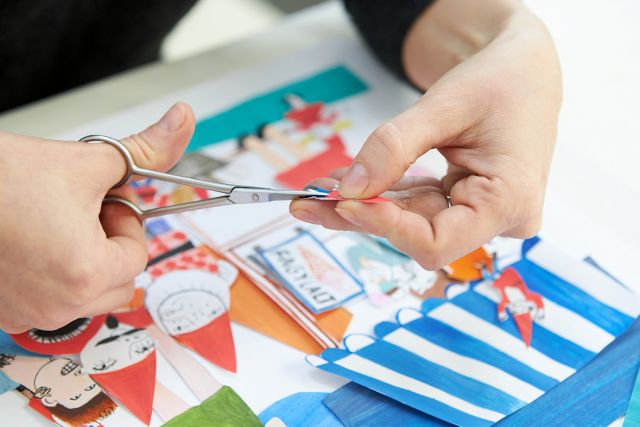
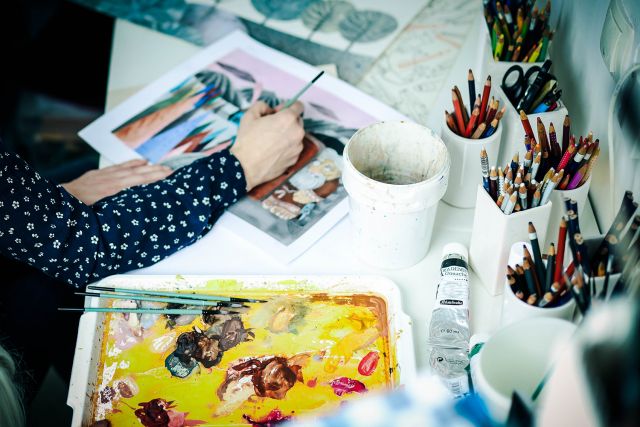
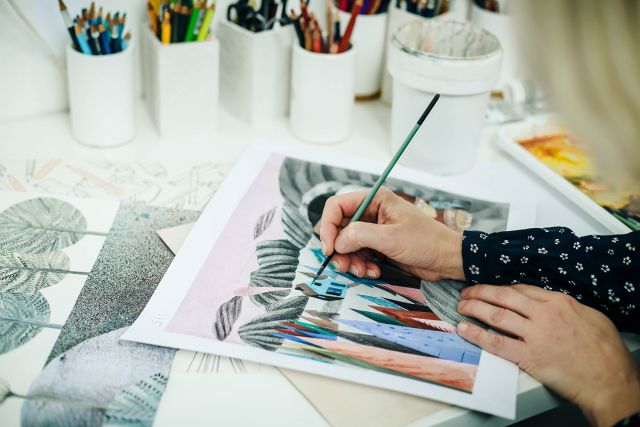
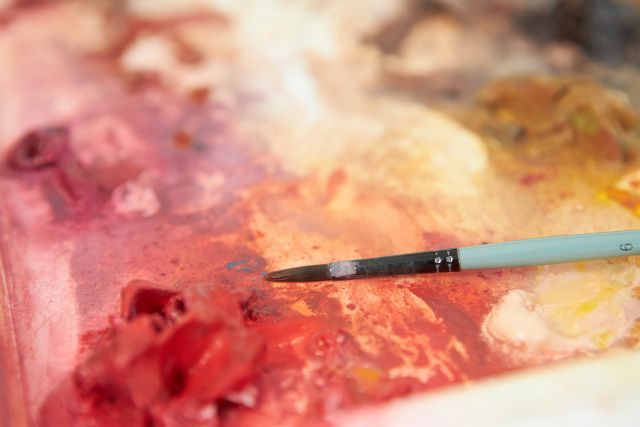
Alexandra Grela
- Illustrator
- Debrecen, Hungary
- Master Artisan
By appointment only
+36 302708401
Painting the world bright
- • Alexandra illustrates books for children and adults
- • She combines tempera with other techniques
- • Her works burst with bright colours and joyful decorative details
As a child, Alexandra Grela spent a lot of time in her room, sitting on the windowsills, drawing people passing by and making up stories about their lives. She loved it so much that, after graduating in painting and being a professional painter for a while, she turned to full-time book illustration. “I did not take additional courses,” she explains. “I just felt the need to tell stories and I started doing it. The rest came on its own.” At the beginning, her works were extremely composed. Then Alexandra's mood changed. Today her drawings are full of animals and ornamental patterns and are vibrant with life and colours. “I moved from lyricism and nostalgia to laughter and love of life,” Alexandra says. “This transformation also applies to myself. Through illustrating, I have become a much happier person.”
Read the full interviewWorks
Photo: ©All rights reserved

Photo: ©All rights reserved
This illustration was created for a series of illustrations about the Hungarian city of Debrecen and presents one of the most popular resting places for its inhabitants. It is made in the traditional tempera technique with colourful pencils.

Photo: ©All rights reserved
This illustration is one of the illustrations for the book entitled 'March cut in half'. The story is based on the premise that it is bad to cut your finger because then you are unable to do interesting things. The illustration is made in the traditional tempera technique with oily pastels.

Photo: ©All rights reserved
This is one of the illustrations for the book entitled 'Gibbon and macaque' and depicts a scene in which two curious monkeys hide in a butterfly garden. It is made in the traditional tempera technique.

Photo: ©All rights reserved
This illustration is made for the third part of the book 'Gibbon and macaque' which is about the adventures of two monkeys in a closed zoo. This time the animals get involved in a funny conflict between the nocturnal and daytime inhabitants of the zoo. The illustration here is made in the tempera technique.





